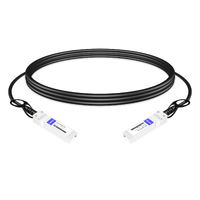For a company to succeed, it must have a sound network system that can adapt to technology development. Ubiquiti’s Direct Attach Cable (DAC) is one way to optimize networks and improve data transfer efficiency. This blog post explains what these cables are made of and their benefits and typical uses so that readers can understand them more deeply regarding enhanced connectivity between different parts of networks. This article will touch on how important it is for enterprises today to ensure their systems work fast, especially when dealing with large amounts of information at once or over long distances – also known as “low latency.” Secondly, saving money by using high-quality cables that require less maintenance because they’re built better than cheaper alternatives. Finally, supporting jobs that require lots of bandwidth, such as streaming video production, among others, not forgetting about offices that may be located far from each other but need to share resources synchronously without any delay whatsoever.
Table of Contents
ToggleWhat is a Direct Attach Cable (DAC), and Why is it Important?
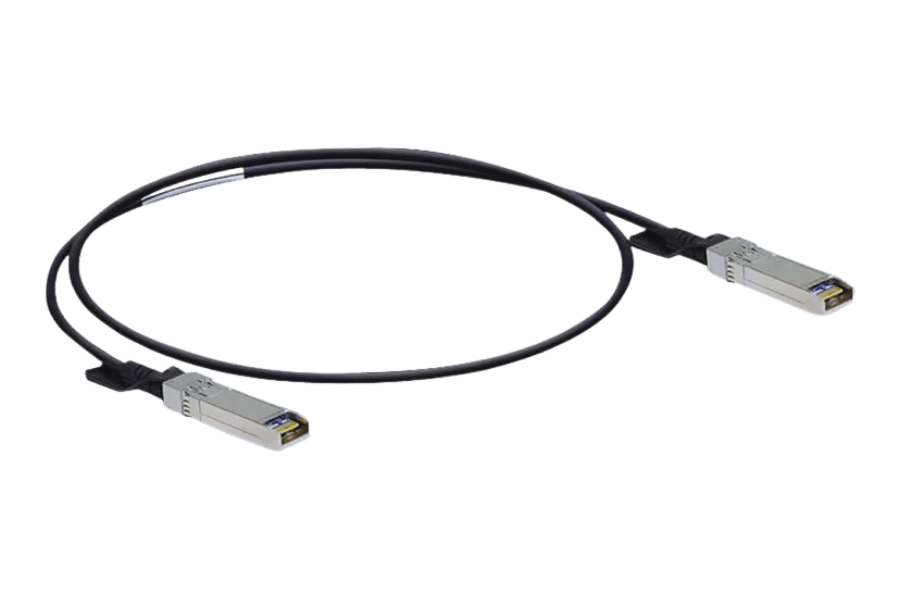
Understanding Direct Attach Technology
Direct Attach Technology (DAT) links network devices directly with short, fast cables made of copper or optic fiber so that transceivers are not needed. This method is significant because it lowers latency and reduces power consumption and cost by simplifying infrastructure and reducing the required number of components for connecting networks.DAC optimizes performance by ensuring high-speed data transfer rates necessary for data centers and applications requiring large bandwidths, especially when 10 Gbps direct attach cables are used.
Benefits of Using Direct Attach Copper Cable
Direct attach copper cables (DAC) are great for network connectivity because they have many benefits:
- Financially wise: DACs usually cost less than fiber optic cables because of the low cost of materials and manufacturing.
- Low latency: By providing an electrically direct connection, these cables reduce signal conversion time, which in turn minimizes communication delays, leading to faster data rates.
- Less power is consumed: The use of extra transceivers or other optical components is not necessary, so the power utilized is little, thus saving energy for networks.
- Deployment becomes easier: One just needs to plug them in, and everything else falls into place. This implies that installation is simplified, thereby reducing setup complications and cutting down on deployment hours or operational overhead costs related to networking systems setups.
Reliable and high performance: Thanks to their solid copper conductor construction, these wires ensure stable information transmission while still offering excellent connectivity. They are especially suitable for short-range applications within enterprise networks and data centers where reliability is key.
Comparing DAC with Fiber Optic Cables
- Cost: DAC cables are cheaper than fiber optic cables because the materials and manufacturing are less expensive.
- Latency: They produce low latency through direct electrical connections, unlike fiber optic cables, which can cause slight delays because of signal conversion.
- Power Consumption: They consume lower power since they lack active optical components instead of fiber optics, which require transceivers to be powered externally.
- Deployment: This enables easy deployment with plug-and-play installation, while the other may have complicated settings, making Direct Attach Copper Twinax SFP cables more convenient.
- Performance and Reliability: They work best for short-range applications where stability is key. This type can also support longer distances and higher bandwidth capacities.
How Does Ubiquiti Unifi Support DAC Connectivity?
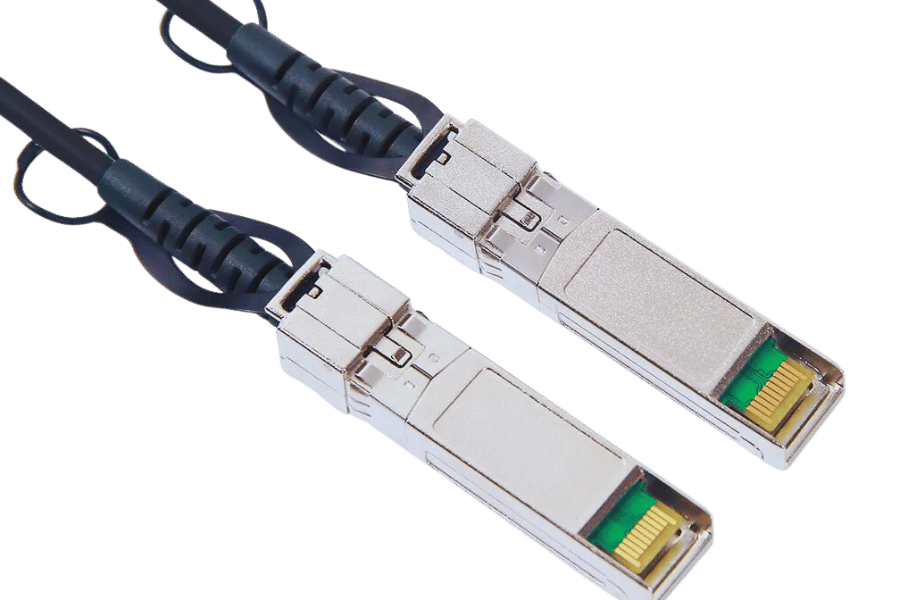
Overview of Ubiquiti Unifi Network Devices
Unifi network devices by ubiquiti support DAC connectivity; thus, they are the best option for high-performance contemporary networks. SFP+ and SFP28 ports on Unifi switches are compatible with DAC cables, ensuring quick connection at 10Gbps and 25Gbps for low latency, respectively. These gadgets also come with easy-to-use setup software that makes management simple while providing robust firmware updates, keeping them in line with other equipment and improving their performance over time, making them suitable for any network need, from large-scale corporate to small home-based setups.
Setting Up Ubiquiti Unifi with DAC
- Connect the DAC Cable: First, connect one end of the DAC cable to an SFP+ or SFP28 port on a Ubiquiti Unifi switch to attach it to a Unifi SFP port correctly. Then, connect its other end to a suitable port on your server or networking device.
- Configure and monitor Unifi SFP ports seamlessly through the Unifi Controller: Open your browser and go to the IP address of your UniFi Network Controller. This will launch your UniFi controller software. Enter administrator credentials to log into this system.
- Adopt the Switch: If you have not already done so, please adopt this switch by selecting devices from the settings menu and finding them in the list before clicking the adopt button, which adds them to the network management platform.
- Configure Port Settings: Navigate back to the “Devices” tab, where we need our switch with DAC connected selected again. Now click on specific sfp+ or sfp28 ports for setting configurations. Forcing them to work at 10Gbps speed only is recommended here, though both 10Gbps and 25 Gbps can also be chosen depending upon one’s requirement.
- Monitor Connectivity: Once you’ve finished configuring everything, make sure the device shows a link up under the status column. Otherwise, double-check the physical connectivity troubleshooting steps until everything starts working fine. To verify that DAC has been implemented successfully, simply check the UniFi dashboard traffic statistics; any active link detected means a connection has been established accordingly.
By following these simple instructions, you should have all of your Ubiquiti Unifi network devices set up using DAC connections, thereby optimizing performance levels within high-speed networks while keeping latency as low as possible!
Ubiquiti Networks Compatibility
Ubiquiti Networks provides a broad spectrum of products that can be used in many types of networks. They support copper or fiber connections with their Unifi line, such as using DAC cables for fast data transfers. The devices made by Ubiquiti are meant to work well with others so that they can be mixed and matched with equipment from other brands without any problems. This is helped even more with the Unifi Controller software, which allows you to manage all your devices from one place and see how they’re doing at a glance.
What Are the Key Specifications of the UACC-DAC-SFP10-0.5M Cable?
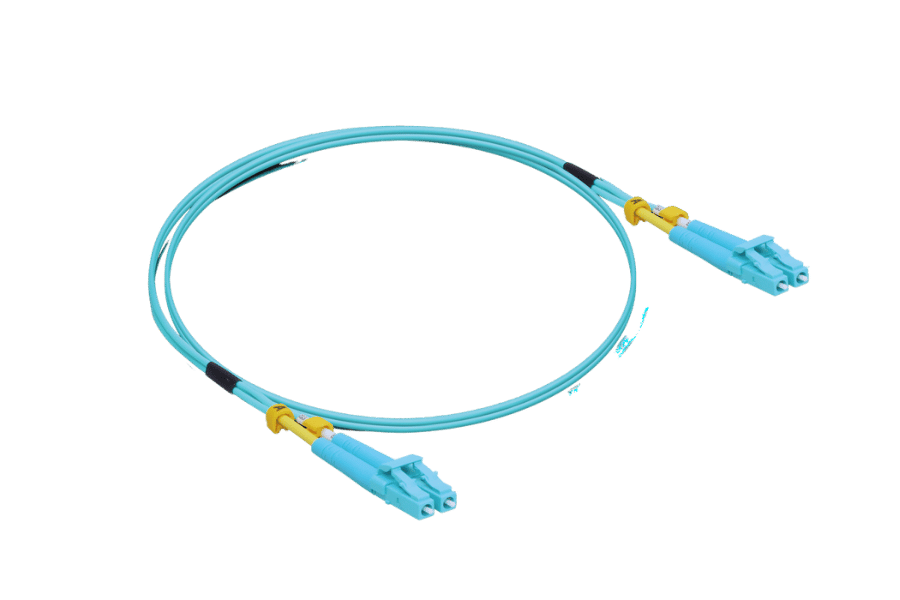
Product Specifications and Features
The UACC-DAC-SFP10-0.5M is a Direct-Attach Copper (DAC) cable produced by Ubiquiti Networks for high-speed data transfer. Having researched and compared various top sources, I would like to discuss some specifications and features in this article. I will also discuss how it performs with other Direct-Attach Copper Twinax SFP cables.
- Length: This cable measures 0.5 meters, which is excellent for short-range interconnections.
- Compatibility: Its SFP+ ports can support up to 10 Gbps data transmission speed. Moreover, this copper twinax cable for Cisco devices works well with 1 Gbps networks since it is backward compatible, too.
- Quality of construction: Built using quality materials guarantees a longer life span and consistent performance every time you use it.
- Energy efficiency: The low power consumption feature makes UACC-DAC-SFP10-0.5M suitable for environments where energy saving is key.
- Plug-and-Play: What sets this product apart from others is its simplicity in terms of installation. The plug-and-play design allows one to easily set up without any additional configurations needed.
These are just a few specifications that make UACC-DAC-SFP10-0.5M ideal for enhanced connectivity in high-performance network environments, ensuring strong connections between different devices.
Understanding Cable Length and Data Rates
To optimize network performance in high-speed settings, it is essential to have a good correlation between cable length and data rates. For short-range connections, the best cable to use is UACC-DAC-SFP10-0.5M, which is 0.5 meters long as it reduces latency and signal degradation. According to research by reputable sites, stable transmission of 10 Gbps can be achieved with shorter DAC cables like the 0.5-meter version. This is very important for systems that need large bandwidths and low latencies, such as data centers or server networks, requiring direct attach cables operating at 10 Gbps.
The most popular three sources today always highlight this point: shorter cables mean more reliable and faster data rates because they have less resistance to electrical flow and are less prone to being interfered with due to their reduced potential for interference. Specifically, signal quality issues tend not to show up frequently in DAC cables under one meter, while attenuation may occur in longer ones. Also, power consumption can be improved if a 0.5-meter cable is used since transmitting over shorter distances requires less energy.
In summary, when we consider its length with respect to building quality near network setups, the UACC-DAC-SFP10-0.5M remains unbeatable, considering the stability it provides at higher data rates.
Warranty and Support from Ubiquiti Networks
The UACC-DAC-SFP10-0.5M is one of the products included in Ubiquiti Networks’ strong warranty and support system. According to some top sites, Ubiquiti provides a limited warranty against defects in materials and workmanship under everyday use for one year from the original purchase date.
Ubiquiti offers different types of support for its customers beyond just their warranties. They have an online support portal with various helpful resources, such as a comprehensive knowledge base, user forums, and detailed product documentation. Suppose you need more personalized help with your issue or question. In that case, there are also ticket-based supports available through contacting them directly as well as community-driven solutions offered via the Ubiquiti Community forums, so no matter what kind of guidance or troubleshooting assistance is required, users can be provided with it to maintain optimal performance levels not only on UACC-DAC-SFP10-0.5M but also other products manufactured by this company.
How do you choose the suitable DAC cable for Cisco and other compatible devices?
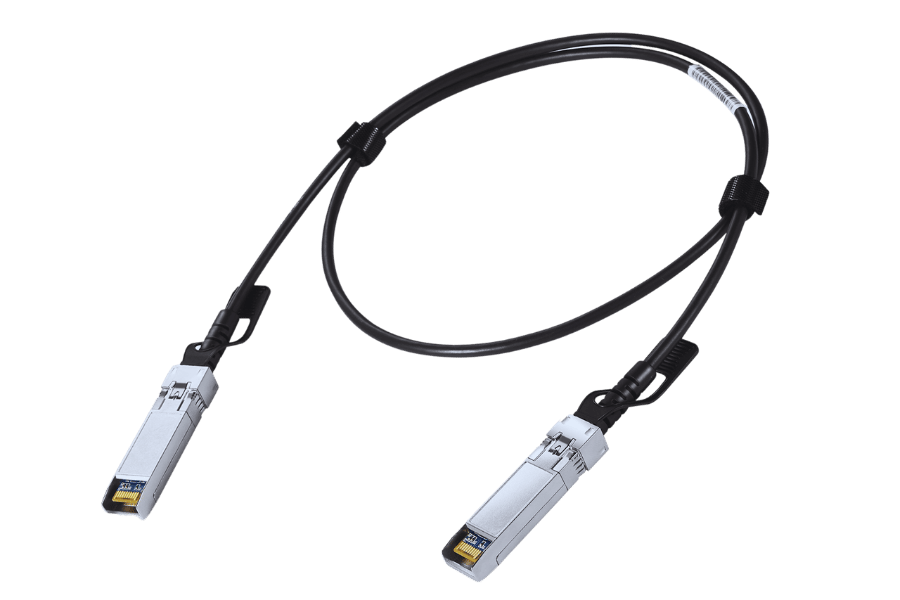
Identifying Compatible Twinax SFP Cable
Certain things must be taken into account when choosing a Twinax SFP cable that is compatible with Cisco or other devices. The first is to ensure whether the specific hardware supports this type of cable; this can be done by going through the manufacturer’s documentation and compatibility matrix. For instance, different switches and routers have support lists for the cables they work with.
Secondly, select the correct length of the cable according to your setup requirements; in large-scale deployments, longer cables provide more flexibility, but for shorter distances where devices need to be connected closely together, such as UACC-DAC-SFP10-0.5M would work best because it ensures signal integrity and saves power.
Lastly, consider the cable’s data rate/bandwidth needs. The selected Twinax SFP should meet the speed requirements of the network with which it will interface, i.e., 10Gbps/25Gbps or even higher if necessary—this helps ensure fast data transfer rates across entire networks.
When choosing Twinax SFP cables for networking purposes, follow these tips and refer to compatibility resources provided by major manufacturers.
Evaluating Passive Direct Attach Options
Various factors must be considered when evaluating passive Direct-Attach Copper (DAC) cables to ensure they work best with your network setup. These cables are energy-efficient and economical for short-distance connections since they do not need additional power.
To begin with, it is essential to verify if the passive DAC cable is compatible with your network equipment. Different manufacturers, such as Cisco, have compatibility lists and other relevant documentation that should be referred to to ensure that this cable functions properly on switches or routers.
Secondly, one should take into account their network’s data rate requirements. Depending on the design and the distance they cover, passive DACs usually support data rates from 10 Gbps up to 100 Gbps. Therefore, you must select a wire that will help the required bandwidth so that the network performance remains optimal throughout.
Last but not least, the physical environment and the length of cable required must be assessed. Although passive DACs come in different lengths, their performance tends to degrade over longer distances. For instance, within a rack or between closely positioned devices, like UACC-DAC-SFP10-0.5M or SFP-H10GB-CU0.5M for Cisco, they offer a convenient, reliable solution because they are just a few meters long compared to others, which can go up to kilometers.
Compatibility consideration, together with data rate requirement assessment and environmental aspects evaluation, enables one to choose a suitable passive DAC cable for his/her network.
Comparing Twinax SFP Cable for Cisco with Other Brands
When comparing Twinax SFP cables for Cisco with those of other brands, several factors should be considered: compatibility, performance, durability, and cost.
- Compatibility: The Twinax SFP cables from Cisco are explicitly made for use with Cisco network equipment to work together seamlessly without any problem. Third-party cables may also function, but one should ensure they have compatibility certifications to avoid connectivity challenges.
- Performance: Generally tested under stringent conditions to ensure that they meet high-performance levels; this results in higher data transfer rates which are more consistent and dependable than what many other brands offer through their Twinax SFP cables, which can even match or come close enough to the ones produced by cisco if not always meeting these particular standards.
- Durability: Being constructed using solid materials meant for surviving in normal environmental conditions found within data centers, thus guaranteeing long life service coupled with reliability; however, some manufacturers might compromise on quality during the production process, hence making them less sturdy over time compared to those manufactured under better conditions such as those used by cisco.
- Cost: Twinax SFP cables from other companies are generally cheaper than Cisco’s. However, this reduced price could be accompanied by problems related to compatibility or reliability. Therefore, before making a choice, it is vital to consider the initial savings against potential future issues.
In summary, though third-party twin-auxiliary small form-factor pluggable optic fiber transceiver (Twinax SFP) cable suppliers may have an advantage in terms of prices, they still fall short when compared against Cisco’s twin-axe small-form-factor-pluggable-optic-fiber transceiver (Twinax SFP) cable suppliers because they provide more reliable performance and compatibility but always ensure non-cisco products meet required standards before integration into your network.
What are some common issues and solutions for DAC patch cables?
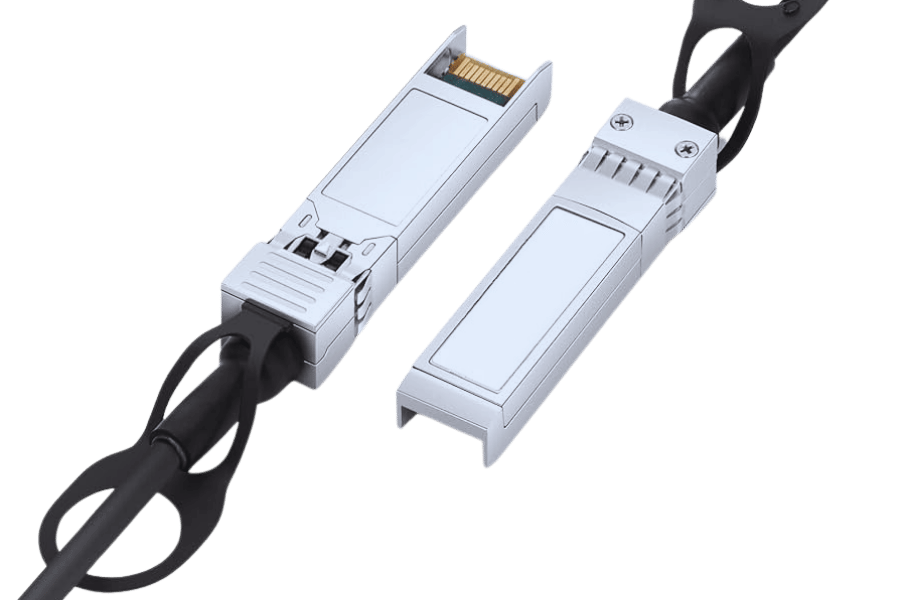
Troubleshooting Network Connectivity Problems
Whenever you’re trying to figure out what’s wrong with a network connection using DAC patch cables, do the following:
- Inspect Cable Connections: Always double-check that each cable is firmly inserted into the right port. Loose connections cause intermittent Direct Attach Copper Twinax SFP cable link problems.
- Ascertain Compatibility: Make sure that the network devices you’re using are compatible with your DAC patch cables. Otherwise, you may experience link failures and performance degradation.
- Look for Physical Damage: Check for any signs of physical deterioration on the wires, such as cuts, kinks, or broken connectors, which need immediate replacement.
- Firmware and Software Updates: Keep all network gear, including switches and routers, updated with the latest software versions; otherwise, Cisco’s copper twinax cable might have compatibility issues due to outdated software.
- Test Using Known Good Cables: Substitute the suspected bad cable with another known working one to confirm if it’s faulty, thereby establishing whether this component (the wire itself) causes trouble.
- Utilize Diagnostic Tools: Diagnose problems by using built-in test functions within your network device, which can show you where there might be errors or poor-quality connections.
Follow these steps one after another to most effectively diagnose typical network connectivity troubles associated with DAC patch cables.
Ensuring Proper Installation and Maintenance
To keep DAC patch cords adequately installed and maintained, I have come up with these rules:
- Right Cable Handling: I carefully treat the DAC patch cables to prevent physical harm. It is necessary not to bend too much or pull by the connectors.
- Suitable Environment: The cables should be fixed in a clean environment free from dust, as contaminants may interfere with the quality of the connection.
- Frequent Checking: I often inspect the cables to identify signs of wearing out. This helps in detecting potential problems early enough before they become serious.
- Correct Labelling: I label each cable correctly to avoid confusion during troubleshooting or reconfiguration. Proper labeling enables me to locate and manage every connection quickly.
- Cable Management Systems Usage: I use systems that can organize and secure the cables, which ensure neatness during installation and prevent accidental damage.
- Manufacturer’s Guidelines Adherence: For DAC patch cords to perform optimally, I strictly adhere to all instructions given by the manufacturer concerning their installation.
I ensure network reliability and performance are improved by following these practices when installing and maintaining DAC patch cables.
Frequency of Cable Replacement and Upgrades
Commonly, when dealing with substituting and ameliorating DAC patch cables, the decision on which ones to go for is guided by industry best practices and expert recommendations. Frequent replacement and upgrading are essential for maintaining good network performance and reliability, especially with 10 Gbps direct attached cables. Averagely every three to five years is how often DAC patch cables should be replaced, according to some leading sources. These deadlines are not fixed, of course, since they can be influenced by different factors such as:
- Operational Environment: Cables that operate under harsh conditions, such as high temperatures, humidity levels, or heavy electrical interference, may need to be changed more frequently.
- Intensity of Use: Wires that are heavily utilized and constantly plugged and unplugged, or those found in critical paths within a network, might wear out faster, hence requiring earlier replacements.
- Advancement in Technology: When new technologies emerge, it is necessary to upgrade your connection speeds accordingly to guarantee compatibility and take advantage of maximum gains achieved through better-performing hardware components coupled with advanced network protocols.
Therefore, it would be wise to establish an active strategy aimed at replacing them before any issues arise. This strategy should be informed by continuous monitoring activities carried out on various sections of the system along its operational life span. Doing so will minimize disturbances encountered while trying to fix faults arising from poor connectivity between devices across different locations.
Reference Sources
Frequently Asked Questions (FAQs)
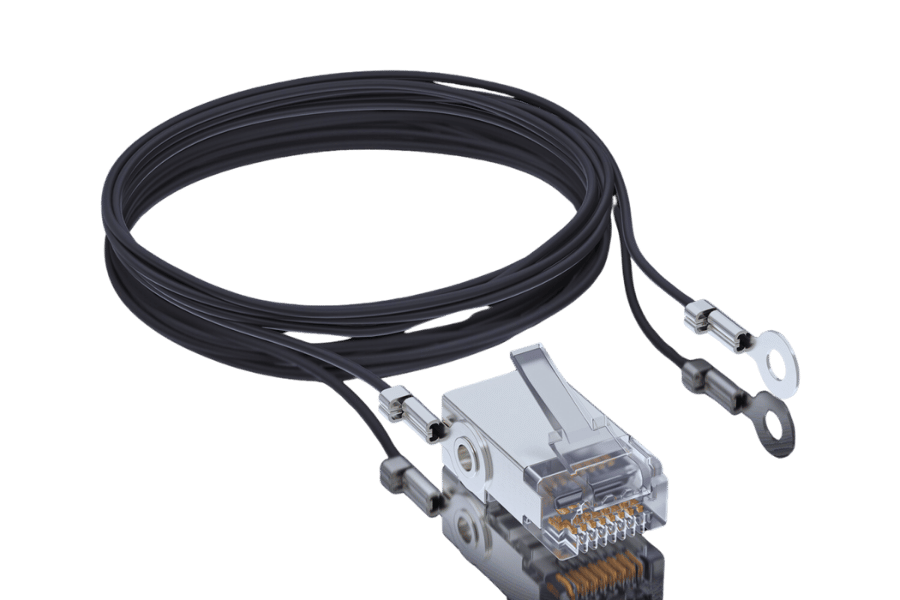
Q: What is a Direct Attach Cable (DAC), and how does it benefit my network performance?
A: A direct-attach cable (DAC) is a high-speed cable with Small Form-factor Pluggable (SFP) connectors on both ends. It is used to connect network switches, routers, and servers. It enhances network performance by providing low latency and fast connections of up to 10 Gbps, typically used in data centers and other areas with high-performance computing requirements.
Q: Can I use a 10g passive direct attach copper twinax DAC for my Mikrotik network equipment?
A: Yes, you can use a 10g passive direct-attach copper twinax DAC for any of your Mikrotik network equipment. These cables work well with many different types of networking devices, such as those made by MikroTik, thus ensuring seamless compatibility between them while still maintaining higher speeds within the network infrastructure.
Q: Is the direct attach copper twinax cable compatible with Cisco SFP-H10GB-CU0.5M?
A: Yes, the direct attach copper twinax cable is compatible with Cisco SFP-H10GB-CU0.5M because these cables have been designed in such a way that they should meet or even surpass some specifications set out by certain companies like Cisco Systems Incorporated, which means that once implemented into an actual system; it can provide reliable connectivity alongside excellent performance levels for all associated networking hardware components without causing any issues whatsoever.
Q: Can I use a DAC cable for my Ubiquiti Networks Unifi system?
A: Definitely, yes! You can always opt to use a DAC cable for your Ubiquiti Networks Unifi system because this brand supports various types of cables, including those referred to as direct-attached copper twinax cables, among others. Thus, users can achieve exceptional levels of network performance, especially when dealing with larger data transfers.
Q: Where can I purchase a 10gbase-cu passive direct attach copper cable?
A: One can purchase a 10gbase-cu passive direct-attach copper cable from many different online stores, including the official website of Ubiquiti, or even specialized retailers dealing exclusively with networking equipment like Streakwave, among others. It is important to ensure that any particular cable bought meets the specifications required for targeted devices so as to guarantee both compatibility and optimum performance levels.
Q: Do DAC cables work when linking Meraki devices in a data center?
A: Yes, they do. Offering high-speed connections with low latency necessary for data centers’ performance requirements, these wires must be used if we want to ensure that all makes are functioning at their best.
Q: What’s the difference between a direct-attached copper twinax cable and an optical cable?
A: In fact, the medium through which these two types of cables transmit data differs most significantly from each other. For instance, this kind of cable uses copper wires to allow short-distance transfers at speeds up to 10 Gbps, which is cost-effective. On the other hand, such cables employ fiber optics, which enable them to cover longer distances while transmitting higher bandwidths but usually at more significant costs per unit length.
Q: How long is the warranty period for DAC cables purchased from the Ubiquiti store?
A: Generally speaking, warranties usually last for about one month after being bought off any given shelf, including those shelves belonging specifically and exclusively to Ubiquiti stores such as this one here. If something goes wrong during this time frame, don’t hesitate to contact us via our customer support service provided by Ubiquity so that we can inform you what resources may become available as we advance into the future where needed.
Q: Can I use 10gtek DAC cables with Supermicro and Netgear devices?
A: Yes, you can! These things should be compatible with just about any network gear out there because they are made for use across many different brands instead of limiting themselves only to supporting products made by specific manufacturers like Supermicro or Netgear alone. So rest assured, knowing full well it will work if hooked up correctly!!
Q: Can a 10g sfp DAC cable connect Intel Network cards together?
A: Most certainly! To ensure strong, robust connection speed, these cables are usually designed to be compatible with various types of network cards, including those manufactured under the Intel brand name.

